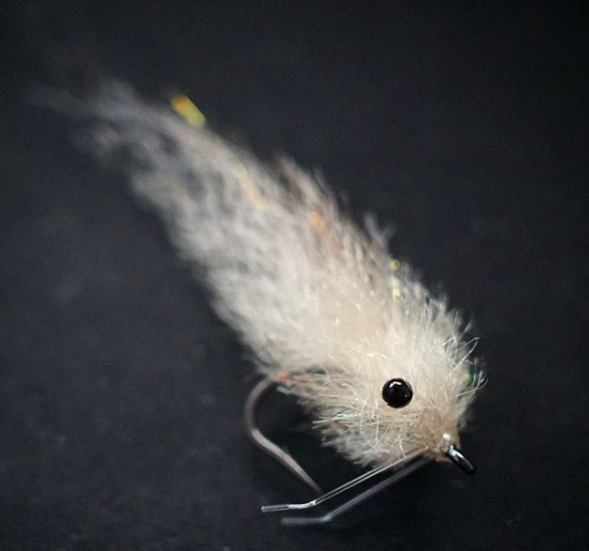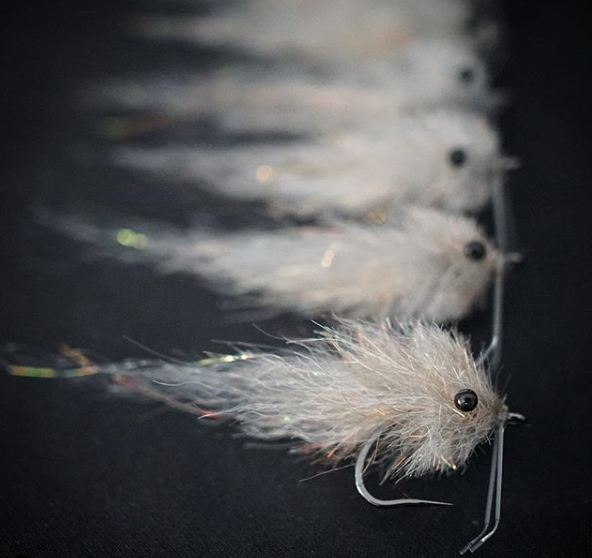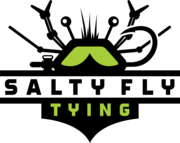

The Five-Minute Finger Mullet Fly is a dubbing-brush pattern tied completely with synthetic materials. I created this pattern years ago in an effort to create a flashy yet realistic mullet imitation. The fly needed to be large, castable and at the same time exhibit the correct carrot-shaped profile to move water when stripped. This seems easy now, but at the time dubbing brushes were not popular yet. Very few materials on the market provided the qualities needed to accomplish the size, shape and translucency I was looking for.
Evenly dispersing flash throughout a fly is one of the hallmarks of a well-tied fly. It is relatively simple to tie in flash along with other synthetic materials to achieve a uniform and realistic look throughout the body of the fly. It is far more difficult to do when you are trying to create a cylindrical shape such as a finger mullet and finish the fly’s head with the same material. The fastest and easiest way to accomplish this, in my opinion, is with a dubbing brush. You can blend multiple colors of a material, as heavy or sparsely as you wish, and with a few quick wraps you are done. The same material you created the body of the fly with is now uniformly palmered around the hook and ready to be trimmed to its final shape.
5 Minute Finger Mullet Fly Materials
The biggest problem was finding a material that was long enough to create the length and girth of the fly. If you use two different materials, the color of the body of the fly was always slightly different than the head. The material also had to be thin enough to spin effectively in a dubbing brush machine. I experimented with several types of fur but they flattened out when wet or became soggy and difficult to cast. Yak hair seemed like the perfect choice. But due to its slick, wiry nature it bunched up when I tried to spin it into brushes. The fly had to sink beneath the surface, so deer hair was out. Even if the head of the fly was not densely packed you were still limited to the size of the fly you could create and the larger variations were a real bear to cast long distances.
I liked Steve Farrar’s Flash Blend fibers for a number of reasons, the first being that it came in a wide array of colors. This material could be blended to match the lighter-colored mullet on the beach and the darker ones found in back-bay environments where the water is more stained. The SF Flash Blend was thin enough to spin and no additional flash was needed to be incorporated in to the mix.
Glued-on eyes never seemed to look right to me when used with cylindrical-shaped baitfish patterns. No matter how careful you are gluing them on, they never seem to line up right. As a result you are left with a cross-eyed mullet fly that corkscrews when stripped. The large black mono nymph eyes were not long enough to create the wide head I was trying to achieve. The fix was two large EP crustacean eyes tied parallel to each other to give the pattern a realistic, wide profile.
Long, slow strips or a two-handed retrieve work well to emulate the natural motion of a blissful finger mullet. As the fly glides along just under the surface a faint wake is produced—just like a contented little finger mullet.
